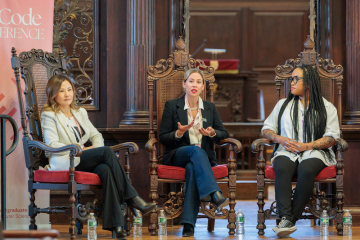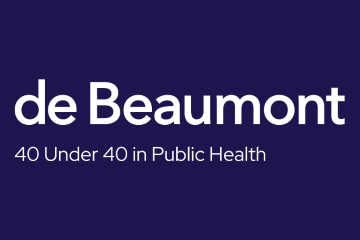As a Black woman and current Master of Public Health graduate student, I find it imperative to see minorities, especially minority women like me, hold positions of leadership in public health. Not only do racial and gender diversity contribute to a more inspiring workplace, but the variety of perspectives, ideas, and experiences that people of diverse backgrounds bring to the table can help shape a strong public health workforce to effectively serve communities.
Among all the public health crises that we have faced in recent years, from the COVID-19 pandemic to natural disasters such as hurricanes and wildfires, marginalized communities have been disproportionately impacted. These communities in particular need a public health workforce that understands their specific needs and can carry out services with respect, cultural competence, and empathy. To advance health equity, public health professionals need to be representative of the communities that they serve.
Workforce diversity has been shown to encourage creativity and improve cultural competence, among other benefits. Diversity in public health organizations helps to ensure that programs and interventions are appropriately designed and implemented, resulting in more equitable health outcomes. Achieving a more robust, dynamic, and diverse workforce requires deliberate efforts across public health.
You Can’t Be It If You Can’t See It
The latest findings from the Public Health Workforce Interests and Needs Survey (PH WINS) show that 54% of the workforce is white and 66% of those in executive roles are white. How can we as public health professionals ensure that leadership roles better represent the communities that we serve? de Beaumont 40 Under 40 honoree Alexis Travis, PhD, assistant provost and executive director of university health and well-being at Michigan State University, spoke with us about her recommendations for increasing diversity in the public health workforce.
Building a Pipeline
Fostering a culture that embraces a range of perspectives, ideas, and creativity not only promotes equitable representation, but also helps to shape a stronger workforce. That process needs to begin early. “To recruit and retain a diverse public health workforce, we need to start by building the pipeline, educating students and their advisors starting from K-12 about the various career paths public health has to offer,” Travis says. She adds that resources and support must be in place to help emerging professionals prepare for leadership roles, such as “providing access to mentoring, executive sponsorship, coaching, tuition reimbursement for advanced degrees, and leadership academics.”
Putting DEIB Into Practice
Since the racial justice movement prompted by the murder of George Floyd and the subsequent protests in 2020, there has been a surge in Diversity, Equity, Inclusion, and Belonging (DEIB) efforts in sectors including public health. However, these initiatives have not largely translated into real change.
For one thing, “Public service roles often require a deep personal connection with a mission and a commitment to social change,” Travis says. “This attracts a lot of advocates. However, frustration often occurs when people encounter rigidity within the systems we work in and a lack of receptivity to differing perspectives and styles.” Effecting change requires public health organizations to create environments in which all perspectives are not only heard, but also valued.
In her previous role at the Michigan Department of Health and Human Services, Travis created a diverse hiring team of staff who completed a training curriculum to apply a DEIB perspective to the recruiting process. The curriculum included learning about topics such as implicit prejudice, systemic racism, disability, and cultural competency. As part of the new policy, a diversity hiring team member would sit on each interview panel to advocate for DEIB. “Finding ways to institutionalize DEIB is important if we are going to get beyond words to action,” Travis says.
Forging Partnerships
The COVID-19 pandemic underscored disparities in health professions, with people of color being more likely to practice in underserved communities while also working lower-wage positions. “Many public health professionals have salaries funded by grants, which provides less stability and is a less attractive employment prospective,” Travis says.
Adequate funding sources are needed to recruit and sustain a strong, diverse workforce, and forging public-private partnership and programs is one solution. These initiatives “allow public health professionals to extend their access to resources through other, or more well-resourced organizations” Travis says, emphasizing the need for diversity while making sure that retention is a priority too.
The Bottom Line
A public health workforce that reflects the diversity of its communities is critical to addressing crises and meaningfully engaging with community members every day. Public health organizations must prioritize DEIB in their recruitment and retention efforts, but also create the systems and structures that enable public health professionals from diverse backgrounds to thrive. By doing so, we can build a well-supported and robust workforce that is equipped to meet the unique needs of our populations.





